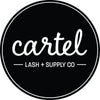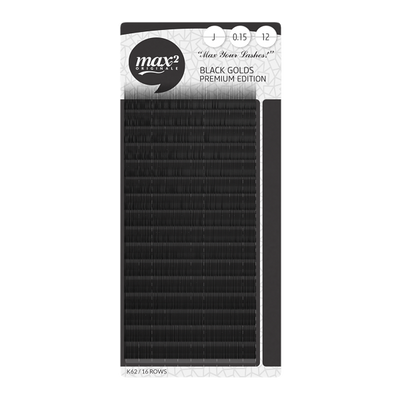What to Do For an Allergic Reaction to Eyelash Extensions
Unfortunately, allergic reactions happen, even to those who have been doing lash extension applications for years. This doesn’t always happen. The key is you. You will need to know the possible side effects of each product and let your client know about them.
It is very important as a lash technician to ask questions to find out if the client has known allergies.
Here are some things you need to know about eyelash extension allergies.
How to tell if its an eyelash extension allergy or irritation
It might be uncommon, but lash glue allergy and irritation still happen. There are times when you might think a symptom is an allergic reaction but in fact, it is only an irritation. It is best to know what the difference between the two is.
Lash Extension Allergy vs Irritation
Differentiating an allergy from eye irritation might be too complicated because they look alike. The usual cause of irritation is the fumes being released from the lash adhesive. Some of the symptoms of irritation are red puffy eyes, itching, and watery eyes.
While an allergy is an oversensitivity of your immune system to something that other people encounter daily. An example of an allergy is peanut allergy.
Irritations subdue quickly compared to allergies that only get worse over time.
What is an allergic reaction to eyelash extensions
Allergic reactions usually show up after the first 72 hours (3 days) after the lash extension treatment.
The usual cause of allergies is not really the extensions themselves but when the eyelash extension glue is uncured. Sometimes it is because of ingredients in the lash adhesive like carbon black, cyanoacrylate, or latex.
Carbon Black
Carbon black is what makes your lash glue dark which makes it great for blending your lash extensions into the lash line.
If you have a carbon black allergy, use clear glue instead. The only drawback of using clear glue is that it dries slower and only has about 5 weeks retention. However, this is something you need to use if clients have sensitive eyes or an allergy to carbon black.

Cyanoacrylate
Cyanoacrylate is the main ingredient in lash adhesives which ensures lash extensions last as long as possible.
Sadly, for a cyanoacrylate allergy, clients CAN’T have eyelash extensions because there is no alternative ingredient for this.
Latex
Latex allergy often builds up over time when the person is exposed to latex. Because of this, a lot of people don’t know they have a latex allergy.
Luckily, there are latex-free lash adhesives. However, using latex-free adhesives will lessen the lifespan of your lash extensions by about 1 week.
Be sure to let your lash artist know if you have any of these allergies before the application.
What are the symptoms of an allergic reaction to eyelash extensions
Allergic reactions might occur in both eyes. Symptoms usually show within 72hrs after the application.
Side effects
The lash glue formulation includes a lot of chemicals and ingredients and may cause allergic reactions. Some of the side effects of lash glues include:
- Bloodshot eyes (or red eye)
- Burning feel
- Itchiness
- Pain
- Rash
- Inflammation and redness on both eyes and eyelids
- Swelling

Different clients may encounter various side effects and symptoms. If any clients are experiencing these symptoms and they seem to be getting worse, call a qualified health professional. If the symptoms persist and cause discomfort, remove lash extensions at once.
How long will the allergic reaction last
Depending on the severity of your allergic reaction, the symptoms may last from a few hours to a few days. The treatment can also affect how long the symptoms last.
Treatment
If your eyes are just mildly irritated, you can try these home remedies:
- Cold compress
- Allergy eye drops
- Take antihistamine
But keep in mind, if symptoms persist and last longer than 24hrs, it is recommended to go see a doctor.

Prevention
First and foremost, check if clients have allergies to any of the ingredients in the lash adhesive. This way, you can check if there are any alternatives you can use.
If you are unsure, we advise going for formaldehyde-free, black carbon-free, latex-free, and cyanoacrylate-free products.
Products containing formaldehyde caused keratoconjunctivitis (inflammation of the cornea and conjunctiva).
For lash artists, limiting the amount of fumes you expose to your clients is the biggest way to help prevent allergic reactions. You can also try these:
- Use a fan and opening the door or a window will help keep the air flowing.
- Make sure your client’s eyes are shut when you are working.
- Shake your lash adhesive well before using it.
- Use a thin, even amount of adhesive.
- Use a nano-mister. It doesn’t only help in curing your lash adhesive but also limits the exposure to those irritating molecules floating in the air.
- Rinse your client’s eyes, not only the lashes, with saline to remove any residue.
- And most importantly, explain the proper aftercare treatment your client needs to do.
When to see a professional
If clients encounter any discomfort, even the smallest one, we HIGHLY RECOMMEND going to a healthcare professional. We have to remember, our eyes are very very sensitive. And even the smallest discomfort can potentially cause loss of vision.
Both irritation, infection, and allergic reactions may look like the same symptoms. It is best to go to a healthcare professional for symptoms.




